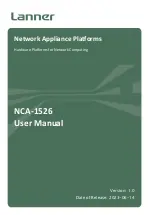
170
Usage guidelines
The password in the specified mode is inserted into all outbound hello packets and is used for
authenticating inbound hello packets. Only if the authentication succeeds can the neighbor relationship
be formed.
For two routers to become neighbors, the authentication mode and password at both ends must be
identical.
For secrecy, all passwords, including passwords configured in plain text, are saved in cipher text.
If you configure a password without specifying a level, the password applies to both Level-1 and Level-2.
If neither
ip
nor
osi
is specified, the OSI-related fields in LSPs are checked.
The
level-1
and
level-2
keywords are configurable on an interface that has had IS-IS enabled with the
isis
enable
command.
Examples
# On VLAN-interface 10, configure the authentication mode as
simple
, and set the plaintext password
to
123456
.
<Sysname> system-view
[Sysname] interface vlan-interface 10
[Sysname-Vlan-interface10] isis authentication-mode simple plain 123456
Related commands
•
area-authentication-mode
•
domain authentication-mode
isis bfd enable
Use
isis bfd enable
to enable BFD.
Use
undo
isis
bfd enable
to disable BFD.
Syntax
isis bfd enable
undo
isis bfd enable
Default
IS-IS BFD is disabled.
Views
Interface view
Predefined user roles
network-admin
Examples
# Enable BFD for IS-IS on VLAN-interface 11.
<Sysname> system-view
[Sysname] interface vlan-interface 11
[Sysname-Vlan-interface11] isis enable
[Sysname-Vlan-interface11] isis bfd enable
















































